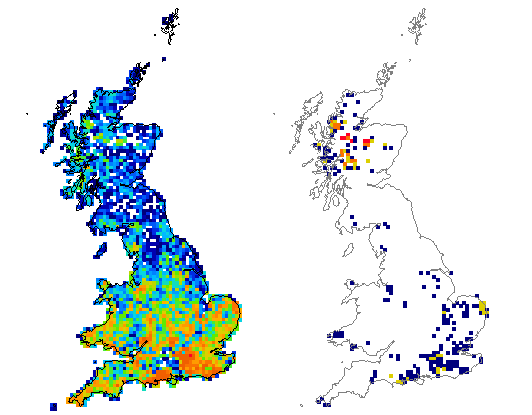A popular approach to identifying rare or narrowly endemic species has been to use a threshold of range size, measured either as an area figure (e.g. 50,000 km2 for some world-wide studies) or as a proportion of all species (e.g. the rarest quartile or 25% of species) (ref 8). The example below shows raw species richness for published records of British dragonflies among 10 km grid cells (Merritt, R., Moore, N. W. and Eversham, B. C. 1996, Atlas of the dragonflies of Britain and Ireland, HMSO, London) on the left, and on the right, the application of a rarity threshold by measuring species richness within just the 25% of species that are most narrowly distributed within Britain ('rare quartile richness'), shown with red for high species richness and blue for low species richness (below):

| (total) species richness |
|